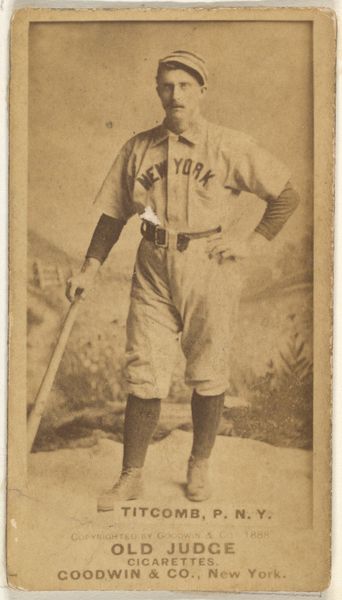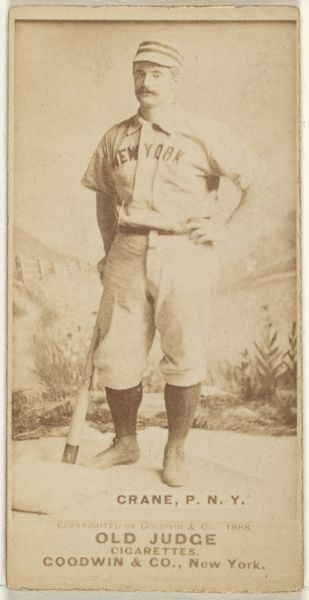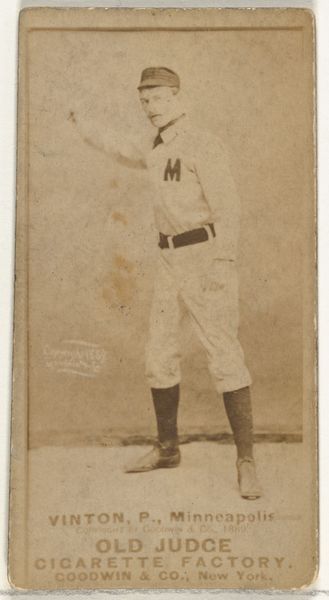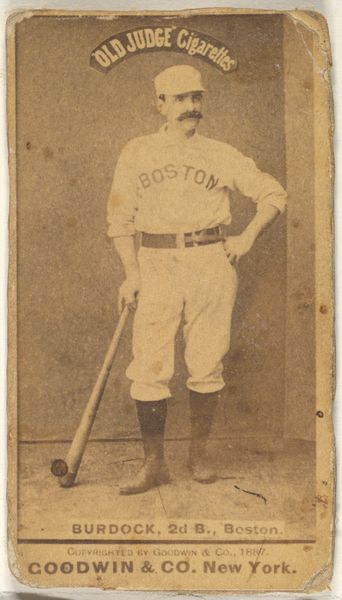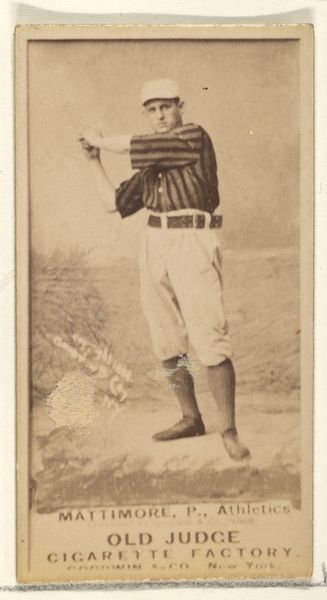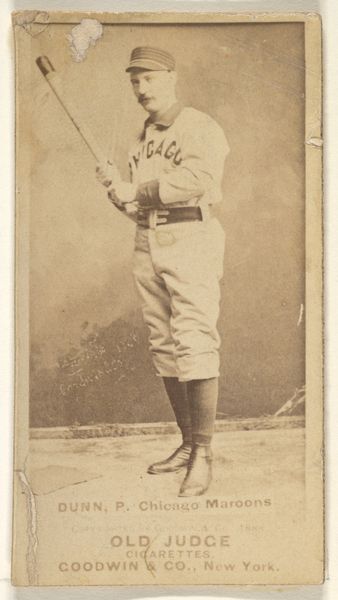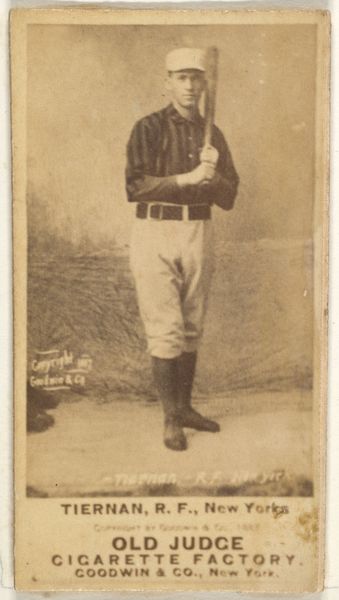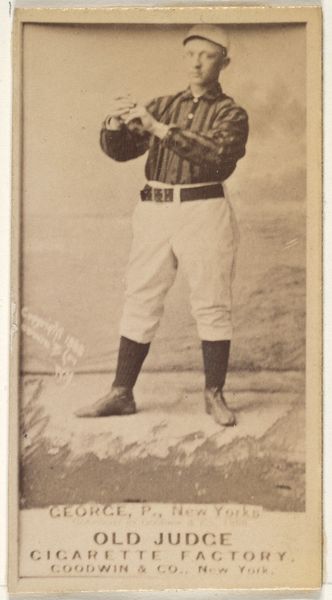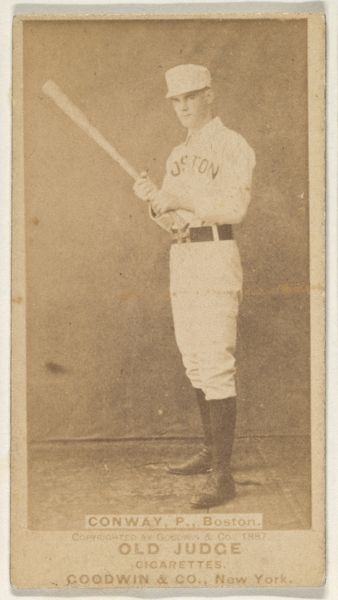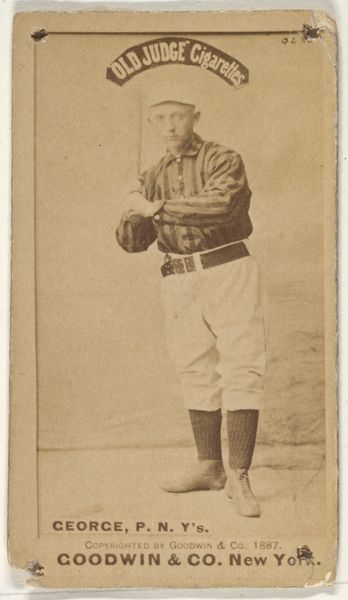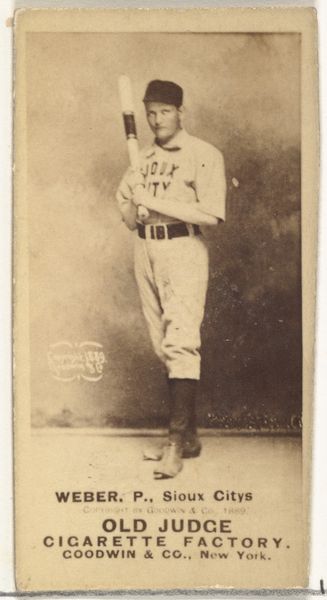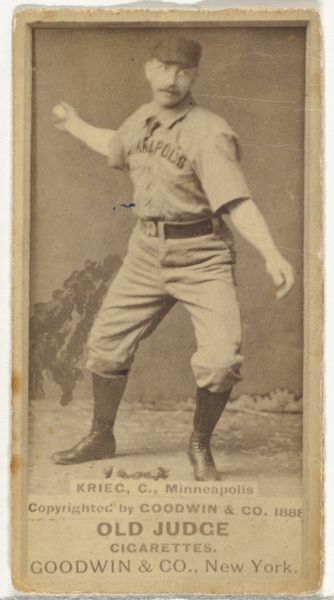
Elmer Ellsworth Foster, Center Field, New York, from the Old Judge series (N172) for Old Judge Cigarettes 1888
0:00
0:00
drawing, print, photography
#
portrait
#
drawing
# print
#
baseball
#
photography
#
19th century
#
men
#
realism
Dimensions: sheet: 2 11/16 x 1 3/8 in. (6.9 x 3.5 cm)
Copyright: Public Domain
Curator: Here we have "Elmer Ellsworth Foster, Center Field, New York" from the Old Judge series, a photographic print produced around 1888 by Goodwin & Company. Editor: Immediately, the sepia tone evokes nostalgia. It's a striking portrait—simple, yet it carries this enormous cultural weight. Curator: Absolutely. These cards were originally included with Old Judge Cigarettes, transforming photographs into a form of mass-produced ephemera. Imagine the distribution network, the scale of production... Baseball cards became advertising tools and a source of consumer engagement. Editor: Beyond baseball itself, the symbolism is potent. He's not just a baseball player; he represents notions of American progress, masculinity, and, even now, the enduring popularity of a cherished pastime. His baseball bat can almost be perceived as a scepter of authority within his field. Curator: Consider the labor involved. From the photographer behind the lens, to the workers processing the photos, and those packing the cigarettes with these cards. This connects photography with industry in surprising ways, allowing it to have cultural influences at that point. The cigarette cards are a material testament of the era. Editor: Looking closely, his stance feels deliberate, almost iconic. It reminds one of classical sculpture, perhaps deliberately referencing an athletic ideal from previous eras but updated for this burgeoning modern age. There's this quiet intensity in his face—an almost heroic presentation. Curator: Goodwin and Company leveraged new printing technologies and the rising popularity of baseball to create a product inextricably linked with tobacco consumption. These are more than just collector’s items, but artifacts showing the complex connections between entertainment, marketing, and industrial capitalism. Editor: Indeed. Ultimately, this simple card distills a moment in time—an athlete, a game, a whole cultural ethos preserved within this little rectangle that holds big resonance. Curator: It reminds us that objects we now view as art or artifacts were once functional, designed for immediate consumption, demonstrating how contexts of art constantly transform over time.
Comments
No comments
Be the first to comment and join the conversation on the ultimate creative platform.
